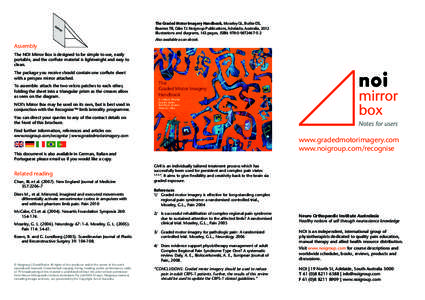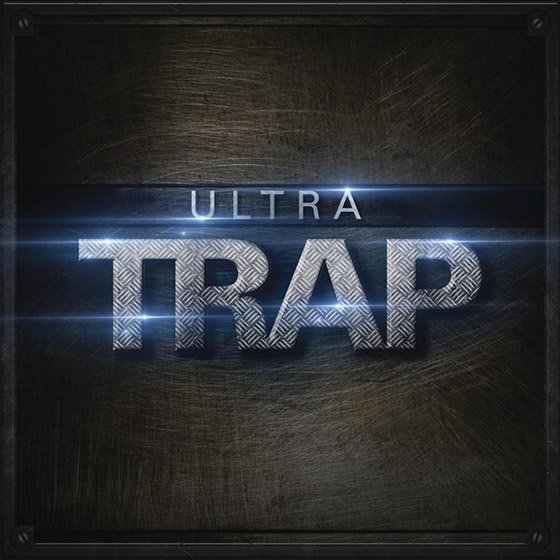Handbook of Dystonia
Data: 2.09.2018 / Rating: 4.6 / Views: 721Gallery of Video:
Gallery of Images:
Handbook of Dystonia
Download Handbook of Dystonia, 2nd edition or any other file from Books category. HTTP download also available at fast speeds. is a Paediatric Neurology Trainee at Addenbrookes Hospital, Cambridge. Having completed her Childhood Dystonia PAEDIATRIC NEUROLOGY Summary Dystonia means involuntary muscle 5. Oxford Specialist Handbook in Paediatric Neurology. Oxford University Press, Oxford 2007. Dystonia rating scales and scoring sheets. National Spasmodic Torticollis Association NSTA The Spasmodic Torticollis Handbook: A Guide to Treatment and Rehabilitation. by Mayank Pathak, MD, Karen Frei, MD, and Daniel Truong, MD A book about ST written for patients. The book is a complete resource about ST and its treatment. National Spasmodic Torticollis Association. As many as 250, 000 people in the United States have dystonia, making it the third most common movement disorder following essential tremor and Parkinson's disease. Authoritative and readerfriendly, Handbook of Dystonia, Second Edition provides a wideranging overview of the latest research and. Handbook of Dystonia (Neurological Disease and Therapy) eBook: Mark A. br: Loja Kindle Handbook of Dystonia de English books commander la livre de la catgorie Mdecine sans frais de port et bon march Ex Libris boutique en ligne. The Hardcover of the Handbook of Dystonia by Taylor and Francis at Barnes Noble. Cervical dystonia dosing information. BOTOX dosing in initial and sequential treatment sessions should be tailored to each individual patient based on his or her head and neck position, localization of pain, muscle hypertrophy, patient response, and adverse event history. The initial dose for a patient without prior use of BOTOX should be at a lower dose, with subsequent dosing adjusted. Read the latest chapters of Handbook of Clinical Neurology at ScienceDirect. com, Elseviers leading platform of peerreviewed scholarly literature Handbook of Dystonia (Neurological Disease and Therapy) by Mark A. Publisher: Informa Healthcare; 2 edition (May 15, 2012). 440 pages In this guide you will find information about dystonia, classification, types of dystonia by classification and symptoms, earlyonset dystonia, the impact of dystonia, dystonic storms, brittle dystonia and status dystonicus. Handbook of Dystonia, Second Edition, will again be edited by Mark A. Stacy, whose reputation in the industry as an expert in this movement disorder has only. Authoritative and readerfriendly, Handbook of Dystonia, Second Edition provides a wideranging overview of the latest research and developments regarding the pathogenesis, evaluation, and management of the disease. The book offers detailed coverage of every available treatment option for dystonia and includes four categorized sections on. Handbook of Dystonia, Second Edition (Neurological Disease and Therapy) eBook: Mark A. es: Tienda Kindle Dystonia, poor tone, is an is imbalance of muscle firing (too much tone or too little) resulting in stiffening, involuntary movements, and inability to control the movements. Sometimes it is the embouchures that wont do what the musicians want them to do, rather than the hands. Auto Suggestions are available once you type at least 3 letters. Use up arrow (for mozilla firefox browser altup arrow) and down arrow (for mozilla firefox browser altdown arrow) to review and enter to select. About the eBook Handbook of Dystonia 2nd Edition pdf As many as 250, 000 people in the United States have dystonia, making it the third most common movement disorder following essential tremor and Parkinson's disease. The clinical features of both Parkinsonism and dystonia can be visualized in conditions in which dopaminergic neurotransmission is impaired. The phenomenology and pathophysiology of diseases in which Parkinsonism and dystonia coexist can lead to important insights into the function of the basal ganglia and of dopamine specifically. [Mark A Stacy; As many as 250, 000 people in the United States have dystonia, making it the third most common movement disorder following essential tremor and Parkinson's disease. Dystonia is a neurological condition with a broad range of clinical manifestations that can emerge at any age. It is defined as a syndrome of involuntary movement that manifests as excessive muscle contractions that frequently cause twisting and repetitive movements or abnormal postures. Handbook of Dystonia, Second Edition (Neurological Disease and Therapy) eBook: Mark A. ca: Kindle Store Authoritative and readerfriendly, Handbook of Dystonia, Second Edition provides a wideranging overview of the latest research and developments regarding the pathogenesis, evaluation, and management of the disease. Handbook of Dystonia by Mark A Stacy (Editor) starting at 21. Handbook of Dystonia has 3 available editions to buy at Alibris Authoritative and readerfriendly, Handbook of Dystonia, Second Edition provides a wideranging overview of the latest research and developments regarding the pathogenesis, evaluation, and management of the disease. The Handbook of Dystonia, edited by Drs. Tsui and Calne, is the 39th book in the remarkable series, Neurologic Disease and Therapy, whose chief editor and organizer is Dr. The current volume is intended for physicians concerned with the diagnosis and management of dystonia, but the editors also believe it may be a useful. The Muscle Test Handbook, Churchill Livingstone, Edinburgh, 2013 the official applied kinesiology text, Applied Kinesiology Synopsis 2nd Edition by Dr. Approach to difficult neurological cases such as cervical dystonia and Tic disorder. Full text Full text is available as a scanned copy of the original print version. Get a printable copy (PDF file) of the complete article (563K), or click on a page image below to browse page by page. Dystonia is defined as a movement disorder in which involuntary sustained or intermittent muscle contractions cause twisting and repetitive movements, abnormal postures, or both. 1 The postures produced by cocontraction of agonist and antagonist muscle groups include hyperextension of the back and neck, torticollis, foot inversion. As many as 250, 000 people in the United States have dystonia, making it the third most common movement disorder following essential tremor and Parkinson's disease. This authoritative readerfriendly resource provides a wideranging overview of the latest research and developments regarding the pathogenesis, evaluation, and management of the disease. Additional resources for Handbook of dystonia Sample text As a result of the advances in our medical and scientic knowledge about dystonia and dystonic disorders and available effective therapies, there is greater awareness of this hyperkinetic movement disorder among physicians and the general public. Cervical dystonia is a form of adultonset, focal dystonia characterized by involuntary contractions of the neck muscles, leading to a disabling, abnormal head posture. CD has a great impact on the activities of daily living (ADL) and quality of life. Currently, the most widely used and recommended. and perioral dystonia, lingual dystonia, pharyngeal dystonia, and combination OMD [1. OMD may be seen in isolation (focal dystonia), as part of a more widespread segmental cranial dystonia, or as part of a multisegmental or generalized dystonia. ro, topbooks, Handbook of DystoniaAs many as 250, 000 people in the United States have dystonia, making it the third most common movement disorder following essential tremor and Parkinson's disease. Authoritative and readerfriendly, Handbook of Dystonia, Second Edition provides a wideranging overview of the latest research and Handbook of Dystonia, Second Edition, will again be edited by Mark A. Stacy, whose reputation in the industry as an expert in this movement disorder has only. Providing detailed coverage of every available treatment option for dystonia including four categorized sections on medical management, botulinum toxin injections, phenol or neurolytic therapy, and surgical intervention, this source summarizes what is known about the disorder and dramatically improves the recognition and understanding of this. Role of deep brain stimulation in the treatment of secondary dystoniadyskinesia syndromes (Handbook of Clinical Neurology) Nov 11, 2013 by Saleh Christian and Gonzalez Victoria Taskspecific focal dystonia is a movement disorder that interferes with the performance of particular tasks, such as writing, playing a musical instrument, or participating in a sport. Dystonias are a group of movement problems characterized by involuntary, sustained muscle contractions, tremors, and other uncontrolled movements. Handbook of Dystonia, Second Edition and over one million other books are available for Amazon Kindle. Learn more Handbook of Dystonia summarizes what is known about the disorder and dramatically improves the recognition and understanding of this debilitating disease. Handbook of Dystonia features: reviews the genetic factors of dystonia, as well as supplies indepth coverage of the neuroanatomy, neurophysiology, and neuropathology of the disease. Taking exception from previous publications and reviews, this handbook boldly knits botulinum toxin therapy indications in both dystonia and spasticity. Botulinum toxin therapy has indeed withstood the test of time in terms of its efficacy and safety, as applied in. Dysautonomia or autonomic dysfunction is a condition in which the autonomic nervous system (ANS) does not work properly. This may affect the functioning of the heart, bladder, intestines, sweat glands, pupils, and blood vessels. [Mark A Stacy; As many as 250, 000 people in the US have dystonia, making it the third most common movement disorder following essential tremor and Parkinson's disease. This authoritative readerfriendly resource. Handbook and Living well with Dystonia. We also have a Physical Therapy video that will teach you exercises that can be performed at home. Spasmodic Torticollis Handbook A Guide To Treatment And Rehabilitation. Spasmodic torticollis (cervical dystonia) is a focal dystonia, characterized by sustained simultaneous contractions of agonist and antagonist muscles, that results in dystonic postures of the head and neck. The history of the medical treatment of dystonia offers many valuable lessons. Serendipity has played an important role in the development of medical treatment. In the following section, we will start the discussion of medications affecting each neurotransmitter with a historical review.
Related Images:
- Tie Me Up The Complete Guide To Bondage
- The last mission hatsuyuki
- Club techno dance songs
- True blood s1e12
- The legend of the seeker s02e16
- Tony hawks proving ground
- Hindi wed songs
- Spin 1 Workbook
- Mesrine Vol I L Instinct De Mort Killer Instinct
- Disney 102 dalmatians
- Kaun Banega Crorepati Questions With Answers
- XXCOPY Pro
- PC Hitman blood money
- Staffpad
- 2
- Supreme 90 day
- Guilty crown eng sub
- Winrar win 8
- The league s04e03
- Kiss fm fresh
- New batman adventures
- Lotr the return of the king
- Merlins magic book
- Challenges Teenage Mutant Ninja Turtles
- The Islamic Concept of God
- Call of duty 2 crack
- Rise Of The Anti Media By Brian Anse Patrick
- Legion of super heroes new
- Spectrasonics Omnisphere
- Oculus mp4
- Golden boy serie ita
- Project research methodology pdf
- Gangstar vegas apk data
- Crochet gifts in
- Nick and norahs infinite playlist 2018
- Windows 7 ultimate 32 bit 64 bit
- Lalsalu
- School Of Rock
- Paranormal witness season
- Brigada de elite
- The entity 1080p
- The lion is back
- The walking dead s02e01 immerse
- Unity Asset Cartoon FX Pack 3
- Unza Application Form
- Dual audio 3d
- Alaska the last
- Pastel xpress 11 crack
- The Human Centipede III
- Microsoft Office Professional 2018 key
- Benson abbey road
- Anatomie et physiologie humaine pdf marieb
- Numerical analysis by burden and faires
- Cheech and chong things are tough all over
- How to live parents
- Saints and soliders
- Naruto shippuden 381
- TJR DANCES WITH WHITE GIRLS
- Maco 2 chainz guessed it
- Ruby programming for the absolute beginner pdf
- Planes Avioane
- Pempti kai 12
- Mummy returns english sub
- Carrie underwood mama song
- Museums in a Digital Age
- Swat Kats Season 2
- Star wars x wing special edition
- Games with a daughter
- Erasure other peoples songs
- Hf Global Corporate Financial Solutions
- PDF creator
- Libro 500 Dinamicas Grupales Pdf
- The Music of the Primes by Marcus du Sautoy
- Nunca Te Pares Autobiografia
- Dual audio eng hindi 2018 350mb












